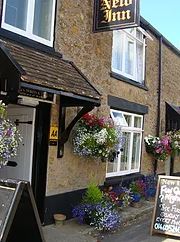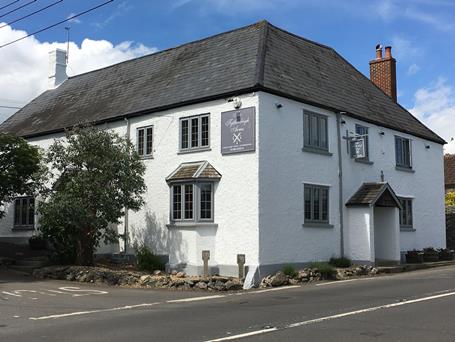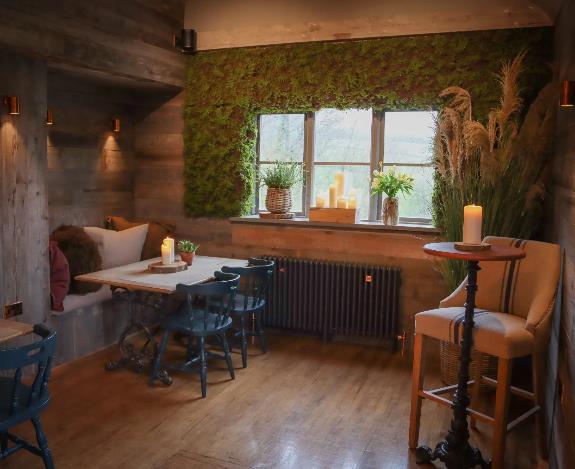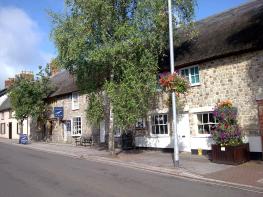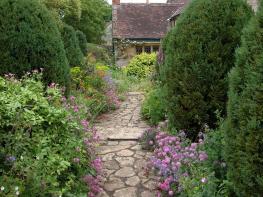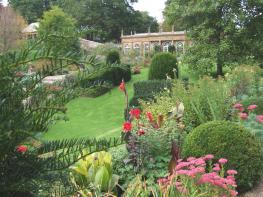Mallinson's Woodland Retreat offers a unique holiday adventure in peaceful and beautiful…
Winsham and Wayford

A walk between two remarkable villages, featuring two very different churches, hidden in the chalk combes of southwest Somerset.
7 miles (11.3kms)
About the walk
Winsham is an attractive village, with houses in Mediterranean colours of yellow and pink as well as golden Hamstone. It’s large enough to support a thriving shop and a village school, while the Jubilee Hall – built for Queen Victoria’s Jubilee in 1897 – is home to plenty of local clubs and activities. Wayford, by contrast, is a diminutive hamlet, with a golden manor house, a few stone cottages and a tiny church, joined to the rest of the world by a single road.
Two contrasting churches
Winsham’s church, dedicated to St Stephen, is essentially medieval. This is because after 1550 official Protestantism under Edward VI saw much church decoration removed or destroyed. For the rest of the century each new monarch, their loyalties swinging between Canterbury and Rome, had the old vicar removed for having the ‘wrong’ religion. Understandably, the wealthy stopped leaving their money to the church and left it to their descendants instead – the grand buildings of Tudor and Stuart times were not churches but country houses.
St Stephen’s is unusual for having retained its rood screen. Even more remarkable is the painted tympanum, the wooden panel that filled the space above the screen, which now hangs on the left-hand wall of the crossing. This 14th-century Crucifixion scene lay under whitewash throughout the Reformation and it was not rediscovered until Victorian times. We are so accustomed to the Victoria-piety style of religious painting – pale people, eyes turned heavenwards – that this down-to-earth painting comes as a refreshing shock.
Wayford’s special saint is St Michael, and the tiny church, barely bigger than a room, was originally built in his honour in the 13th century, first mentioned in 1266. It’s been altered over the centuries, with the interior furnishings and panelling mainly dating from the late 18th and early 19th centuries. The atmosphere is extraordinary: in this spartan, undecorated space, you might feel God is sitting right beside you.
Garden of delights
The walk leads through Wayford Wood, a sort of exotic shrubbery, with unusual trees, superb rhododendrons, Japanese maple and bluebells in season. It was laid out in the first years of the 20th century by the owners Wayford Manor, which itself has a famous garden. Your walk may coincide with one of its open days, giving a chance to explore the garden and get a glimpse of the beautiful Elizabethan manor house. The garden was designed by Harold Peto in 1902 and laid out as a series of garden rooms, with terraces and woodland planting leading down to a series of natural pools. It’s a good example of the Arts and Crafts style, and its beauty and tranquillity appeals even to those who never lift a spade.
Walk directions
At the foot of Winsham’s main street turn left into Court Street, and at its end keep straight ahead, with footpath signs to Wayford. The path becomes a track. Where this is crossed by another track, keep ahead into a field, to pass to the right of Broadenham Farm, with its handsome Hamstone porch. Follow way-markers to the left of the farm buildings to a tarmaced farm lane. Turn right and follow this down and up hill to Hey Farm. The lane leads round to the right of the buildings and then bends downhill to the right. Follow it though Ashcombe Farm – the track between the buildings is a permitted path. In another 0.5 miles (800m) you reach the parking area at the foot of Wayford Wood.
Cross the car-park to go through the gate into the wood, taking the main path up through the trees. At the top of the wood, paths bend right. With the wood edge just above, turn down to the right and descend steps back onto the farm lane, to emerge 350yds (200m) along from the car park. Turn left for 0.25 miles (400m) into Wayford.
At the far end of the village, at ‘Give Way’ markings, turn left up the steep and hedged Chard Lane. At the top of the hill, approximately 1 mile (1.6km) and opposite a side road, turn left through a gate.
A faint track runs across the field, keeping up left from a farm in a dip. At the field end, turn left to a stile, go round an oak tree, and find the corner of a farm track. Follow this ahead, with a hedge on your right (rather than down the right to the farm). After 100yds (90m) the track bends left; here climb a gate ahead and follow the hedge on your right to the field corner and a gate into a lane. Turn right for 220yds (201m) then left onto a concrete farm track signposted for Midnell Farm.
The track leads through Midnell and then Lue Farm, where it passes through a large shed. After 0.25 miles (400m) it joins a road. Turn left, down into a gloomy wood of larches, and then right, over a cattle grid, on to a tarred track. This runs through parkland to reach a lane. Turn left and go down to a mossy bridge.
Head up over the crest of a hill, and down towards Winsham. Just above the village a stile on the left is signed for Back Street. Cross a field corner to the left of some houses. Another stile leads into the village; turn downhill to reach the Bell Inn.
Additional information
Byways, tracks (some tarred), minor roads, field-edges, several stiles
Gently rolling hills
Dogs can be off lead along byways
AA Walker's Map 11 Lyme Bay
Street parking near Bell Inn
None on route
WALKING IN SAFETY
Read our tips to look after yourself and the environment when following this walk.
Find out more
Also in the area
About the area
Discover Somerset
Somerset means ‘summer pastures’ – appropriate given that so much of this county remains rural and unspoiled. Ever popular areas to visit are the limestone and red sandstone Mendip Hills rising to over 1,000 feet, and by complete contrast, to the south and southwest, the flat landscape of the Somerset Levels. Descend to the Somerset Levels, an evocative lowland landscape that was the setting for the Battle of Sedgemoor in 1685. In the depths of winter this is a desolate place and famously prone to extensive flooding. There is also a palpable sense of the distant past among these fields and scattered communities. It is claimed that Alfred the Great retreated here after his defeat by the Danes.
Away from the flat country are the Quantocks, once the haunt of poets Samuel Taylor Coleridge and William Wordsworth. The Quantocks are noted for their gentle slopes, heather-covered moorland expanses and red deer. From the summit, the Bristol Channel is visible where it meets the Severn Estuary. So much of this hilly landscape has a timeless quality about it and large areas have hardly changed since Coleridge and Wordsworth’s day.
Nearby stays
Restaurants and Pubs
Nearby experiences
Recommended things to do
Why choose Rated Trips?
Your trusted guide to rated places across the UK
The best coverage
Discover more than 15,000 professionally rated places to stay, eat and visit from across the UK and Ireland.
Quality assured
Choose a place to stay safe in the knowledge that it has been expertly assessed by trained assessors.
Plan your next trip
Search by location or the type of place you're visiting to find your next ideal holiday experience.
Travel inspiration
Read our articles, city guides and recommended things to do for inspiration. We're here to help you explore the UK.

